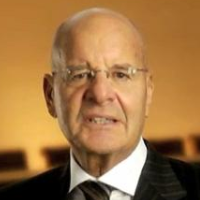Hospitals Reaping Nonprofit Tax Breaks Come Up Short in Charitable Work
 Jeffrey Romoff
Jeffrey Romoff
Many hospitals throughout the United States enjoy nonprofit tax status in exchange for providing help to their local communities. But critics in the health industry say these hospitals often don’t perform enough charitable work to justify the state and federal tax breaks they’re receiving.
Health economists estimate that the nonprofit tax exemptions benefiting hospitals amount to more than $12 billion a year. In turn, however, these institutions are not giving back nearly that same amount to the needy.
“You should get close to the value of tax exemption in community benefit,” Paula Song, professor of health services organization at Ohio State University, told The New York Times. “I think you’ll find most hospitals aren’t providing that.”
The New England Journal of Medicine reported earlier this year that hospitals spent an average of 7.5% of their operating costs on charity care and community benefit. Some spent less than 1%, while others about 20%. The study also showed that only 5% went to public-health programs. Instead, most hospitals’ “giving back” amounted to free and subsidized patient care.
“Nonprofit hospitals may have been founded on the basis of community need but that doesn’t mean they’re not very profitable,” Gary Young, an author of the New England Journal of Medicine article and a professor at Northeastern University, told the Times. “Towns are hurting and they see this affluent institution in their midst on lots of land and say, ‘Hey, cough up some money.’”
Melinda Hatton, general counsel of the American Hospital Association, defended hospitals’ assistance programs for the poor, saying they provide services like training new physicians and treating Medicaid patients who have no other doctors. “Tax-exempt hospitals devote the money they would pay in tax to the health of the community,” she said. “I hope cities don’t undervalue that.”
Going forward, hospitals will undergo more scrutiny from federal regulators and the Internal Revenue Service, which will examine every three years just how much medical centers are donating to their communities.
Hospitals also are facing more oversight from local officials who insist the charity work is not sufficient.
In Pittsburgh, the city sued the University of Pittsburgh Medical Center over its tax-exempt status, saying it should pay some payroll taxes and more property taxes, estimated to total about $20 million annually.
“Its commitment to charity is dwarfed by its preoccupation with profits,” E. J. Strassburger, the city’s lead lawyer on the case, wrote in a letter to the city solicitor.
Described as a “$10 billion global health enterprise,” the medical center failed to meet nearly all of the state’s criteria for tax-exempt status, according to Strassburger, while spending only about 2% of its net patient revenues on charity care. The lawsuit also criticized what it described as excessive pay to hospital executives, such as the $6 million salary paid to president and CEO Jeffrey Romoff in 2010.
-Noel Brinkerhoff
To Learn More:
Benefits Questioned in Tax Breaks for Nonprofit Hospitals (by Elizabeth Rosenthal, New York Times)
What Tax-Exempt Hospitals Owe Their Communities (Bloomberg)
Provision of Community Benefits by Tax-Exempt U.S. Hospitals (by Gary J. Young, J.D., Ph.D.; Chia-Hung Chou, Ph.D.’ Jeffrey Alexander, Ph.D.; Shoou-Yih Daniel Lee, Ph.D.; and Eli Raver; New England Journal of Medicine)
- Top Stories
- Unusual News
- Where is the Money Going?
- Controversies
- U.S. and the World
- Appointments and Resignations
- Latest News
- Trump to Stop Deportations If…
- Trump Denounces World Series
- What If China Invaded the United States?
- Donald Trump Has a Mental Health Problem and It Has a Name
- Trump Goes on Renaming Frenzy






Comments